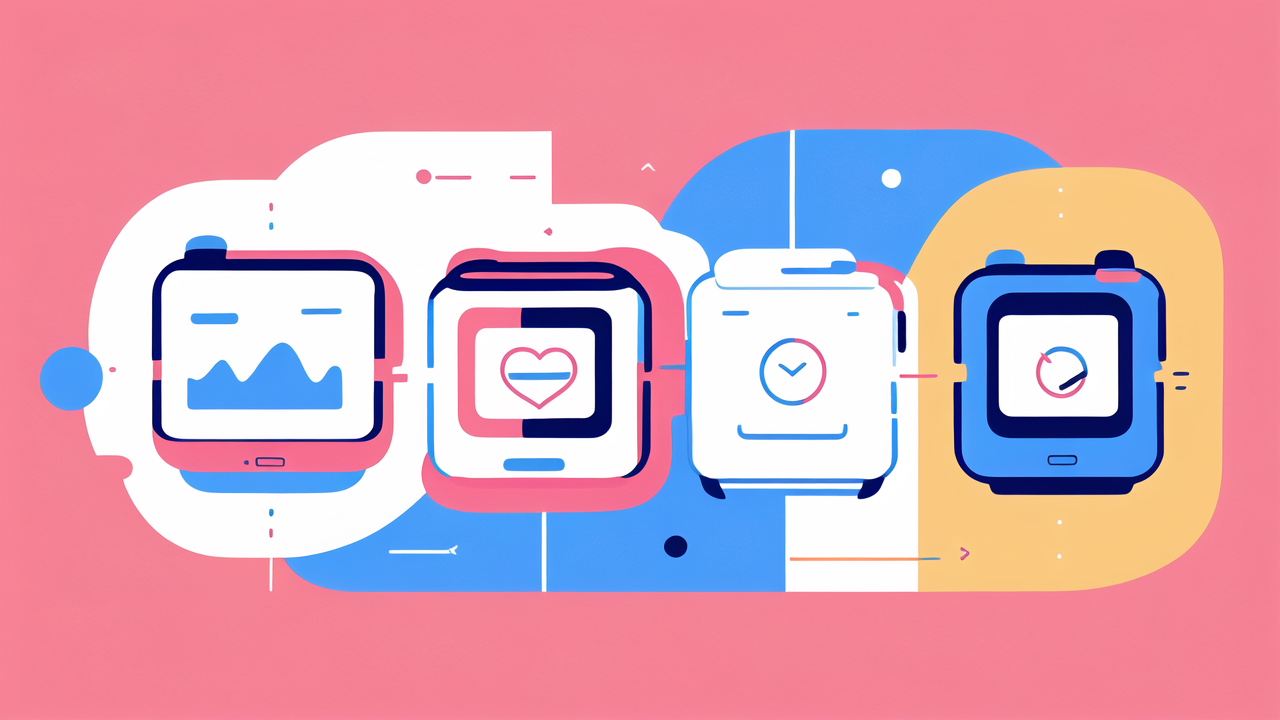Understanding the Rise of Health Monitor Smart Watches
The Evolving Landscape of Wearable Technology
Wearable technology has come a long way in recent years. Health monitor smart watches are at the forefront of this evolution. These devices do more than just tell time. They track our health and fitness in real-time. Body measurement trackers are a key part of this tech. They provide detailed data about our physical changes. This info helps us make better health choices. The market for these devices is growing fast. More people want to take charge of their health. Smart watches make it easy to do so. They offer features like heart rate monitoring and step counting. Some can even track sleep patterns and stress levels. This technology is changing how we think about healthcare. It's putting powerful health tools right on our wrists.

Key Drivers Behind the Adoption of Health Monitors
Several factors are driving the popularity of health monitor smart watches:
- Increased health awareness
- Desire for personal fitness tracking
- Need for convenient health monitoring
- Integration with smartphones and apps
- Improved accuracy of body measurements
People are more health-conscious than ever before. They want to track their fitness progress easily. These watches provide real-time data on vital signs. They can monitor heart rate, sleep quality, and more. Body measurement trackers add another layer of insight. They show how our bodies change with diet and exercise. This data helps users make informed health decisions. The ease of use is also a big draw. You can check your health stats with just a glance at your wrist. These devices are making healthcare more accessible and personalized.
Regulatory Impact on Health-Focused Devices
Regulations play a big role in health monitor smart watches. The FDA oversees these devices in the US. They ensure the watches are safe and effective. This has led to more accurate and reliable products. Companies must prove their devices work as claimed. This has boosted consumer trust in health monitors. It's also pushed makers to improve their tech. The result is better, more trustworthy health data for users. Body measurement trackers must meet strict standards. This ensures their readings are accurate and useful. Regulations also help protect user privacy. This is crucial as these devices collect sensitive health info. As rules evolve, we can expect even safer and more reliable health monitors. These regulations are shaping the future of wearable healthcare technology.
Technological Innovations in Health Monitor Smart Watches
Advanced Sensor Integration for Improved Health Monitoring
New sensors are making health monitors more powerful. These watches can now track more than ever before. Some can measure blood oxygen levels. Others can detect irregular heart rhythms. Body measurement trackers use advanced sensors too. They can measure things like body fat percentage and muscle mass. The latest models even offer ECG functions. These features were once only found in medical devices. Now, they're on our wrists. The sensors are getting smaller and more precise. This means more accurate data for users. It also allows for sleeker watch designs. Some watches can now track skin temperature. Others can estimate hydration levels. These advancements are making smart watches more useful for health monitoring. They're bringing medical-grade tech to everyday wearables.

AI and Machine Learning: Enhancing User Experience
AI and machine learning are changing the game for smart watches. These techs make health data more useful. They can spot patterns in your health stats. This helps predict potential health issues. AI can give personalized health tips based on your data. It learns your habits and adjusts its advice over time. For body measurement trackers, AI helps interpret changes. It can suggest diet or exercise tweaks based on your body's response. Machine learning improves the accuracy of health tracking. It can filter out noise and focus on important health signals. This means users get more relevant insights. AI can also help detect anomalies in body measurements. These features are making smart watches smarter and more helpful. They're turning raw data into actionable health advice.
Battery Life and Performance: Pushing the Boundaries
Battery life is crucial for health monitor smart watches. Users need them to last all day and night. New tech is making this possible. More efficient chips use less power. Better batteries hold more charge. Some watches now last a week on one charge. This is great for tracking sleep and all-day activities. Body measurement trackers benefit from these improvements too. They can take more frequent measurements without draining the battery. Performance is also improving. Watches can do more without lag. They can track multiple health metrics at once. This doesn't drain the battery as fast as before. Some watches now use solar charging to extend battery life. Others have power-saving modes for longer use. These improvements are making health monitors more reliable and convenient.
Market Dynamics and Consumer Trends
Analyzing Market Demographics for Health Monitors
Health monitor smart watches appeal to a wide range of people. Here's a breakdown of key user groups:

- Fitness enthusiasts
- Health-conscious professionals
- Older adults monitoring chronic conditions
- Tech-savvy millennials
- Parents tracking family health
Each group has different needs and preferences. Fitness buffs want detailed workout stats and body measurements. Older users need easy-to-read displays and simple controls. The market is adapting to meet these varied demands. We're seeing more specialized health monitors. Some focus on specific health concerns. Others cater to certain age groups or lifestyles. Body measurement trackers are especially popular with fitness enthusiasts. They help track progress and set goals. The market is growing as more people see the value in these devices. They're becoming essential tools for personal health management.
The Role of Brands in Shaping Consumer Preferences
Brands play a big role in shaping the health monitor market. Big names like Apple and Fitbit lead the way. They set trends and introduce new features. These brands have loyal customer bases. This helps them launch new products successfully. They also invest heavily in marketing. This shapes what consumers expect from health monitors. Smaller brands often follow their lead. They may offer similar features at lower prices. This competition drives innovation across the market. It also gives consumers more choices at different price points. Brand reputation plays a big role in consumer trust. This is especially true for devices that track health data and body measurements. As the market grows, we're seeing new brands emerge. They're bringing fresh ideas to wearable healthcare tech.
Future Outlook: What's Next for Health Monitor Smart Watches
The future of health monitor smart watches looks bright. We can expect even more advanced features soon. Some possibilities include:
- Non-invasive blood glucose monitoring
- Stress level tracking and management
- More advanced body composition analysis
- Integration with telemedicine services
- Personalized health recommendations based on long-term data
Body measurement trackers will likely become more precise. They might offer 3D body scanning or more detailed composition breakdowns. These watches may become key tools in preventive healthcare. They could help detect health issues early. This could lead to better outcomes and lower healthcare costs. We might see more collaboration between tech companies and healthcare providers. The line between consumer gadget and medical device may blur even more. As tech improves, these devices will play a bigger role in our health. They're not just gadgets, but partners in our well-being. The future of personal health monitoring is on our wrists, and it's looking brighter than ever.




Leave a comment
This site is protected by hCaptcha and the hCaptcha Privacy Policy and Terms of Service apply.